Working principle of a clothes dryer
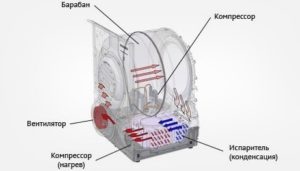 Few people understand the principle of operation of a clothes dryer, considering such equipment to be overkill. But in fact, an automatic dryer will be an excellent addition to the washing machine and will save time on hanging and clothespins. The newfangled unit will be especially useful for those who love large washes, but cannot dry all the washed items. Therefore, there is no reason to avoid machine drying - it is better to get to know its structure better.
Few people understand the principle of operation of a clothes dryer, considering such equipment to be overkill. But in fact, an automatic dryer will be an excellent addition to the washing machine and will save time on hanging and clothespins. The newfangled unit will be especially useful for those who love large washes, but cannot dry all the washed items. Therefore, there is no reason to avoid machine drying - it is better to get to know its structure better.
What types of drying equipment are there?
In the 21st century, hanging is not the only way to get dry things. Moreover, manufacturers of large household appliances offer several options for electric dryers. Their main difference is in the drying technology used: maximum unwinding, steam treatment or passing through hot air. In total, there are three main types of such units.
- Automatic machine with drying. It is convenient to use, economical and does not take up much space, but it has a significant disadvantage - not all washed laundry can be dried, which slows down the washing process.
- Drying cabinet. Such devices are bulky, expensive to maintain and designed for large volumes of laundry, so they are used mainly in large homes or institutions.
- Drum dryer. Outwardly it resembles a washing machine and is considered the “golden mean” among dryers.
Many dryers can be installed in a column and mounted on the wall using special brackets.
Each unit has its pros and cons, but most often housewives choose a drum dryer. Similar dryers are available in various variations.Let's look at which ones and how they function further.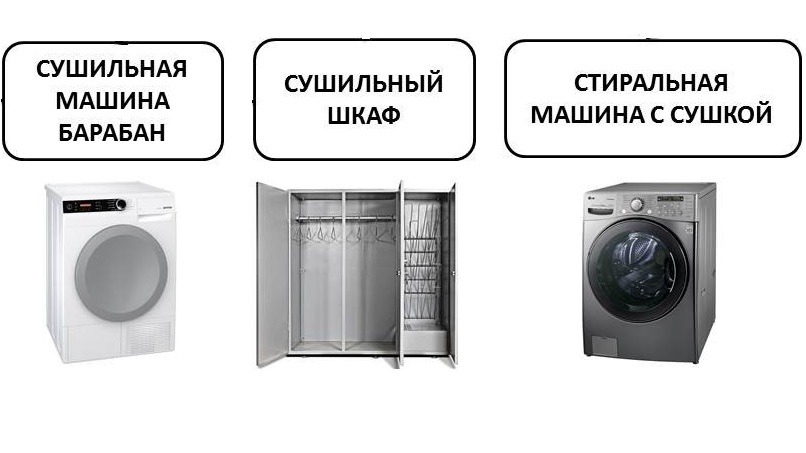
Types of drum dryers
The main division of dryers occurs on the principle of removing moisture from clothes placed in the drum. Water from the laundry can either come out with moist air or accumulate in a special container. There are three main types of drum dryers.
- Ventilation. At the moment, they are considered obsolete, since they have a simple, but inconvenient structure for humans. The moisture released during the cycle is discharged into the ventilation through a special hose. But for this, it is necessary to carry out a number of additional installation works when installing the unit, which reduces its demand among buyers.
- Condensation In such machines, moisture is not removed outside, but accumulates in a separate compartment, which makes them many times more practical than their predecessors. But here, too, everything is not perfect: waste water has to be poured out regularly, and due to slow condensation, the machine must heat the air very much. As a result, the drying cycle takes a very long time and consumes a lot of electricity.
- With heat pump. It is an improved condensation drying. A cooling circuit has been added to it, which provides intensive cooling, accelerating the release of moisture from clothes. This technology not only reduced cycle time, but also reduced energy consumption by 20%.
Models with heat pumps are more expensive, but consume less electricity, so the difference in price is quickly recouped.
The higher the drying class, the more expensive it will cost the consumer. The cheapest ones will be ventilation ones, and the most expensive ones will be models with a heat pump. But you shouldn’t focus only on the cost of the machine; it’s better to evaluate the other components of the device.
Components of the dryer
A review of the main elements of its design will help you understand in more detail how a dryer works. Depending on the model and brand, the equipment may vary, but most dryers are made according to a single model. Each model has:
- dashboard, which houses a digital display, a mode selector, as well as buttons for programs and additional functions;
- drive belt, which is hidden inside the unit and connects the tank shaft to the engine, ensuring rotation of the drum;
- a dryer drum, which in design is practically no different from a washing drum. Often has a backlight, with which you can control the degree of drying of the fabric;

The presence of drum lighting simplifies the process of loading and unloading laundry.
- heat exchanger - a compartment in which isolated movement of cooled and heated air occurs. Due to this, condensation forms and the laundry dries out;
- heating element, which is also called a heating element, it heats the air before it directly enters the drum to wet things;
- a fan, with its help the cold air is given the desired direction, due to which the flow reaches its goal faster.
That's not all, of course. Drying units also have a container for collecting moisture, which can be located below or above, in place of the powder receptacle on the washing machine. It has a retractable mechanism and needs to be emptied regularly, otherwise condensation will begin to get inside the machine and a leak will occur.Some modern models can be directly connected to the sewer, after which the accumulated water will drain on its own.
Dryers also have air intakes, which are additionally equipped with lint filters and collect dust and other debris that enters the machine. They need cleaning at least once a month.
The “heart” of the dryer is the electric motor. It is he who determines its power and the intensity of spinning of the drum. The “brains” can be called the control board, which is responsible for the timely submission of commands and execution of a given program without system failures.
How is laundry drying?
For the owner of the dryer, its operation will resemble a regular washing machine. It is enough to open the door, load the laundry, focusing on the permissible capacity, and start the process by selecting the appropriate mode. True, instead of water, warm air will flow into the tank, and the rotation of the drum will not exceed a speed of 100 rpm.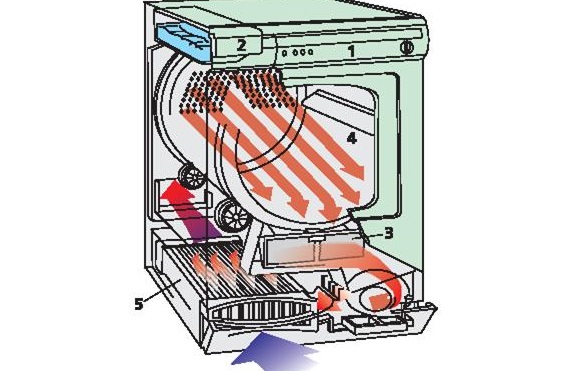
Many tumble dryers offer the user more than 10 different drying programs, tailored to specific fabrics and types of clothing, allowing the user to choose the duration and efficiency of the cycle. If you look inside the dryer, after turning on the cycle the following will happen:
- a running fan will begin to move air masses through the fluff filters to the heating element;
- the machine will warm up to 50-70 degrees, and the second fan will drive hot air into the drum;
- having taken its “portion” of moisture from the wet laundry, the air from the drum will flow to the heat exchanger, “throw off” the water, cool down and again go to the heating element;
- the action will be continuously repeated until the user stops the cycle or the clothes are completely dry.
The maximum power of a dryer is 4000 Watt, but more often machines are capable of 1500-2300 Watt.
After the selected program ends and the machine emits the appropriate melody, the items are taken out and sent to the closet or for ironing. The main thing is not to forget to clean the lint filter so that next time the air can circulate freely throughout the machine. We also remember about the moisture container, which also needs to be emptied, since it is strictly not recommended to leave water inside the unit.
Also, do not rush and start the second immediately after the first cycle. Manufacturers advise letting the machine “rest” for 20 minutes, after which you are allowed to repeat drying.
Interesting:
Reader comments
- Share your opinion - leave a comment

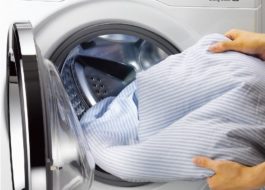

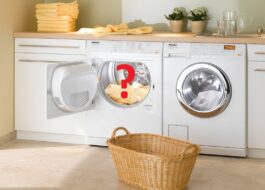
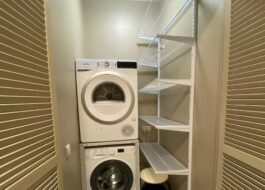

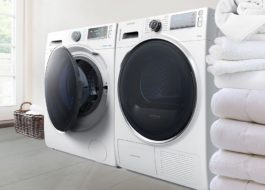














Add a comment